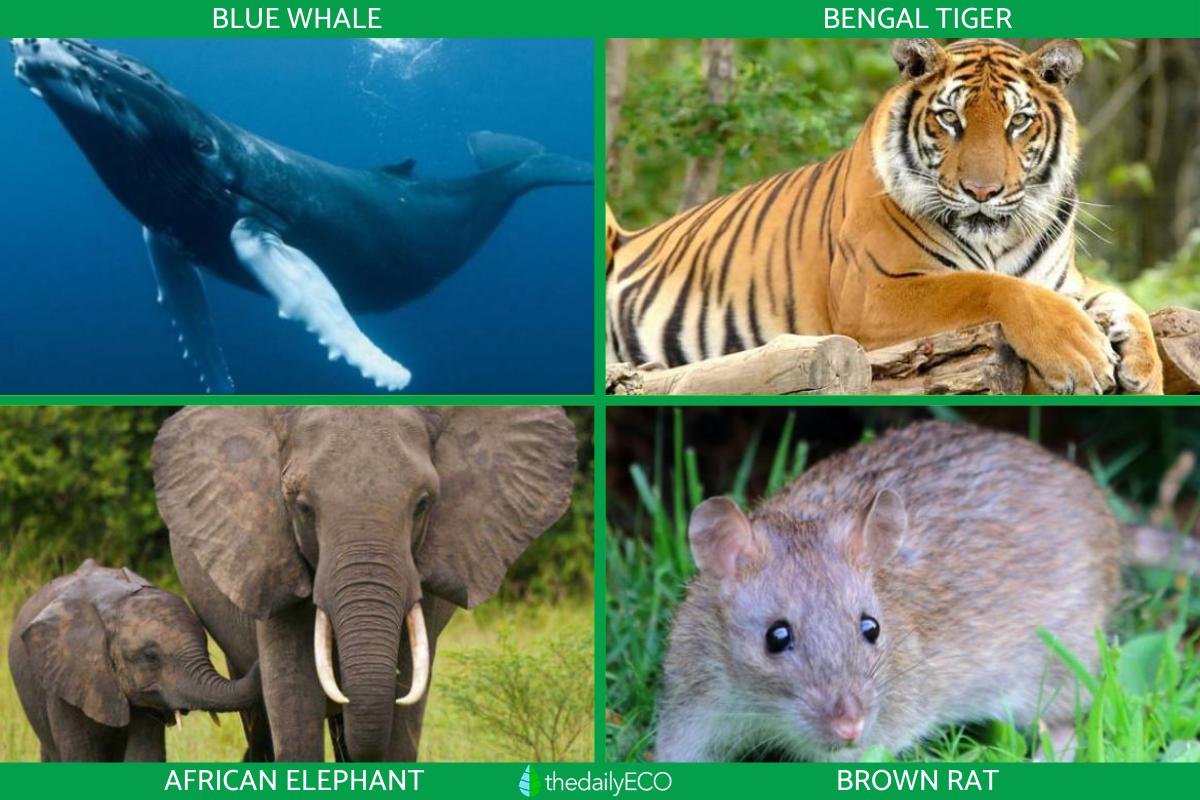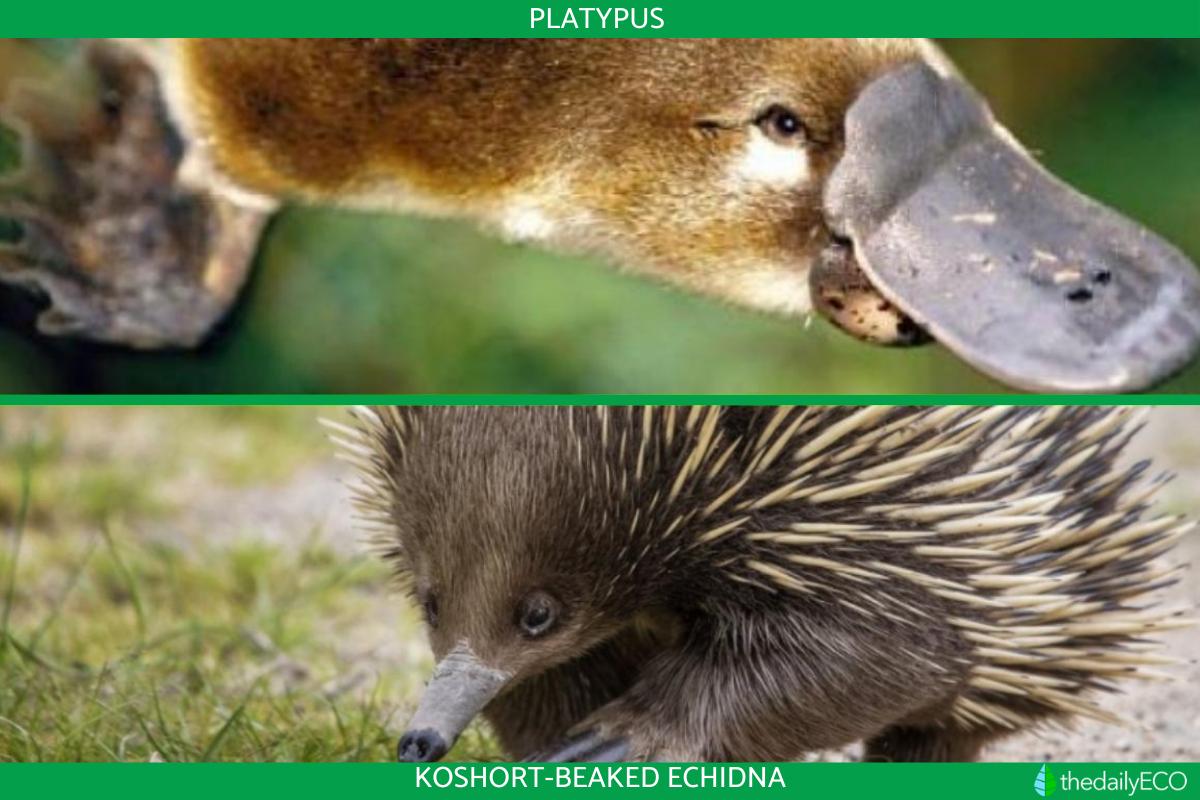Different Types of Mammals


Mammals, characterized by their warm-bloodedness, hair or fur, and milk production, represent a vast and diverse class within the animal kingdom. From the gigantic whales gliding through the oceans to the playful squirrels scampering through forests, mammals exhibit an incredible diversity in size, shape, and behavior. They play crucial roles in ecosystems worldwide, acting as predators, prey, pollinators, seed dispersers, and decomposers.
The following article by thedailyECO explores the different types of mammals. It discusses their key characteristics and presents interesting examples to illustrate their diversity.
What are mammals?
Mammals are a class of warm-blooded vertebrates characterized by the presence of mammary glands, specialized structures that produce milk to nourish their young. This defining characteristic distinguishes them from all other vertebrate classes.
The history of mammals traces back to the Triassic period, around 200 million years ago, when they evolved from therapsids, which were mammal-like reptiles. Initially overshadowed by dinosaurs, mammals flourished following the extinction of dinosaurs.
Over time, mammals diversified into three major groups: placentals, marsupials, and monotremes. Each group exhibits unique reproductive adaptations that have enabled them to successfully inhabit a wide range of ecological niches across the globe.
There are approximately 6,495 recognized species of mammals on the planet. This number is constantly evolving as new species are discovered, and some species are critically endangered or possibly extinct. The majority belong to the placental mammal group, accounting for around 40% of the world's mammal population.
Dive deeper into the fascinating concept of parallel evolution in another article.

Characteristics of mammals
All mammals share a unique set of characteristics that distinguish them from other animal groups. Here are the key defining features:
- Mammary glands: the defining characteristic of mammals is the presence of mammary glands, specialized organs that produce milk to nourish their young. This milk is rich in nutrients essential for growth and development.
- Hair: all mammals, except for whales and dolphins who lost it during evolution, have hair or fur at some point in their life cycle. Hair provides insulation, helps regulate body temperature, and can also play a role in camouflage, communication, and sensory perception.
- Warm-blooded: mammals are endothermic, meaning they can generate their own internal heat to maintain a constant body temperature regardless of the external environment. This allows them to remain active in a wider range of climates compared to cold-blooded animals.
- Three middle ear bones: unlike most other vertebrates, mammals have three tiny bones in their middle ear: the malleus, incus, and stapes. These bones transmit sound vibrations from the eardrum to the inner ear, allowing for a more efficient sense of hearing.
- Single lower jaw bone: mammals have a single bone forming their lower jaw, the mandible. This differs from most reptiles, which have two bones fused together at the chin.
- Diaphragm: mammals possess a muscular sheet called the diaphragm that separates the chest cavity from the abdominal cavity. This muscle plays a crucial role in respiration, allowing for efficient breathing.
- Four-chambered heart: mammals have a four-chambered heart consisting of two upper atria and two lower ventricles. This complex structure allows for the complete separation of oxygenated and deoxygenated blood, improving circulation and oxygen delivery throughout the body.
- Heterodont dentition: most mammals have a heterodont dentition, meaning they have different types of teeth specialized for various functions, such as incisors for cutting, canines for tearing, and premolars and molars for grinding.
These shared characteristics define mammals as a distinct class within the animal kingdom and have contributed to their remarkable success and diversification across the globe. Did you know that primates are actually mammals? Dive deeper in another article.
Types of mammals
Mammals exhibit a wide range of adaptations that allowsthem to thrive in diverse ecological niches. This class can be further categorized into three distinct groups, each showcasing unique evolutionary strategies that contribute to their success:
Placental mammals
Placental mammals hold the title of the most widespread and diverse group within the mammalian class. They give birth to live young (viviparity), facilitated by a specialized organ called the placenta.
This structure allows for a direct exchange of nutrients and waste between mother and offspring, enabling longer gestation periods and the birth of more developed young compared to other mammal groups.
The adaptability of placental mammals has resulted in a diverse array of species that inhabit various habitats. These mammals can be found in oceans, skies (as seen in bats), and terrestrial environments. Examples include whales, dolphins, elephants, and camels.
Marsupial mammals
Marsupials, though fewer compared to placental mammals, present a reproductive alternative. They give birth to underdeveloped young after a brief gestation period. These premature offspring then continue their development in a specialized pouch on the mother's abdomen, where they feed on milk until reaching maturity.
Primarily found in Australia, marsupials include iconic species like koalas and kangaroos. However, they also extend beyond Australia, with examples such as opossums in the Americas showcasing their broader geographic distribution.
Monotremes
Monotremes represent the smallest and most primitive group of mammals. They lay eggs (oviparity), a reproductive strategy more commonly associated with reptiles. This unique characteristic has sparked debates about their classification, blurring the lines between mammals and their reptilian ancestors.
Endemic to Australia and nearby islands, monotremes include just five species, the platypus and various species of echidnas. Despite their limited numbers, they offer valuable insights into the early stages of mammalian evolution, bridging the gap between warm-blooded mammals and their cold-blooded predecessors.

Examples of mammals
We've seen the variety in the mammal kingdom. Now, let's dive into some specific examples:
- The blue whale (Balaenoptera musculus) is a marine mammal found in oceans worldwide. It holds the record as the largest known animal, reaching lengths of up to 30 meters (98 feet) and weighing around 170 tons (340,000 pounds). Feeding mainly on krill, blue whales have no known predators due to their immense size. To learn more about their endangered status, we recommend reading further articles.
- The Bengal tiger (Panthera tigris tigris) is a mammal native to the tropical forests and savannahs of India, Burma, Nepal, and Bangladesh. These tigers can grow up to 3 meters (9.8 feet) in length and weigh about 250 kg (550 pounds), making them one of the largest cats. As apex predators, they hunt animals such as buffaloes, monkeys, wild boars, deer, and birds. Although encounters with humans are rare, they can occur due to habitat loss. To delve deeper into the topic of their endangered status, we suggest reading additional articles.
- The African elephant (Loxodonta Africana) is the largest land mammal, found exclusively on the African continent. These elephants weigh between 6 to 10 tons (12,000 to 20,000 pounds) and are known for their distinctive trunk, tusks, and large ears. Their diet primarily consists of tree leaves, grass, and bushes.
- The brown rat (Rattus norvegicus) is one of the most widespread mammals globally and is often considered a pest. Despite being just a few centimeters in length, these omnivorous rodents can produce between seven and eight litters annually, each with around 12 offspring.
- The common bat (Pipistrellus pipistrellus) is predominantly found in Europe, Asia, and northern Africa. Weighing approximately 5 grams (0.18 ounces), these bats hunt insects at night using echolocation. They are one of the few mammals capable of flight.
- The mountain gorilla (Gorilla beringei beringei) is a primate residing in various reserves across central Africa. With fewer than 900 individuals remaining, it is critically endangered.
- The koala (Phascolarctos cinereus) is a marsupial native to Australia, known for its eucalyptus diet and tendency to sleep up to 20 hours a day.
- The Chilean mouse opossum (Thylamys elegans) is a marsupial endemic to Chile, primarily feeding on insects and small vertebrates.
- The platypus (Ornithorhynchus anatinus) is a monotreme inhabiting rivers in eastern Australia. Notable for its unique features such as a duck-like bill and a beaver-like tail, it is one of the few venomous mammals. Feeding primarily on worms, insect larvae, and small crabs, it can locate prey by detecting their electric fields.
- The short-beaked echidna (Tachyglossus aculeatus) is a monotreme found in Australia, Tasmania, and parts of New Guinea. Like the platypus, it lays eggs and is covered in spines resembling those of a hedgehog. Its diet consists mainly of ants and termites.
Read more about the amazing world of flying mammals by reading this other article.



If you want to read similar articles to Different Types of Mammals, we recommend you visit our Wild animals category.










